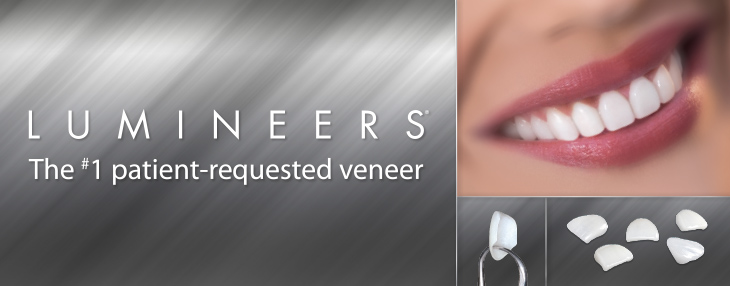
Dental Veneers: A Brief History
Despite coming into vogue relatively recently, the technology that would eventually come to be known as dental veneers actually dates back to the 1930s, in which they were used as a means to temporarily fix the teeth of Hollywood actors, to create the illusion of a perfect smile. While successful in creating what’s now known as the classic “Hollywood Smile” the rudimentary technology could not provide a permanent solution and was not practical for widespread use.
This changed in 1982 when the modern dental veneer was developed, and in the years that have followed, the veneer technology has only continued to improve thanks to numerous advancements in the dental field, and now is one of the most commonly preformed procedures within the realm of cosmetic dentistry.
What Dental Veneers Do
Although relatively simple, yet highly effective, veneers are a clear, soft, porcelain device that is designed to be sealed over both your upper and lower teeth, creating a sort of protective skin that surrounds the outer layer of your teeth. The purpose is to protect your teeth from hazardous outside elements, while simultaneously concealing any prior received abrasions or blemishes that your teeth may have. Once fully applied veneers are generally unnoticeable, thereby allowing wearer to eat, brush, and live as one normally would, with few (if any) limitations. With this amazing ability to deliver a seemingly flawless smile, there’s little wonder as to why veneers have become so popular among patients from all over the country.
However, despite their obvious benefits, there are a few drawbacks from receiving veneers that are important to keep in mind. The source of these drawbacks is the re-shaping process, which requires the removal of the tooth’s enamel, in addition to filing down the surface of the teeth. While this is necessary for the veneers to be successfully applied to your teeth, if the device is removed, your teeth will be unprotected against outside elements.
Veneers vs. Lumineers: The Difference
As something of an upgraded version of the dental veneers, Lumineers are very similar to veneers in both design and general functionality. Much like veneers, Lumineers are designed to fit over both upper and lower rows of teeth, thereby shielding them from troublesome food particles while shrouding it in a whiter but seemingly natural color tint that greatly improves the smile’s overall appearance. However, what truly gives Lumineers a distinct advantage over their predecessor, is that due to their much thinner nature. Lumineers can be applied to your teeth as they are without reshaping or removing the tooth’s enamel! By eliminating the invasive reshaping process, Lumineers not only provide a quicker, easier solution, but also succeed in preventing any issues in the long run.
Related Article: SMILE! We Have Dental Veneer Options for YOU!
A Flawless Smile Awaits!
As mentioned earlier, although they were once only able to create the temporary illusion of a picturesque smile, thanks to modern dental technology dental veneers can actually deliver a smile that is both beautiful and permanent, and with the recent arrival of Lumineers, the process of receiving the smile of your dreams is now easier than ever!
If you are interested in receiving Lumineers, or have any questions about the procedure, please contact our offices at Overland Park Dentistry to schedule your consultation.
Related Article: Smile Pretty with Cosmetic Dentistry Options
Keep Smiling!
Local dentist, Dr. Charles R. Kimes, DDS, and his team at Overland Park Dentistry look forward to having the opportunity to care for you and your family with preventative, restorative or cosmetic dentistry. To schedule your dental appointment with your Overland Park Dentist, contact us at our south Overland Park office at (913) 647-8700 or our north Overland Park office at (913) 341-2380.

 Porcelain Veneers: A Brief History
Porcelain Veneers: A Brief History